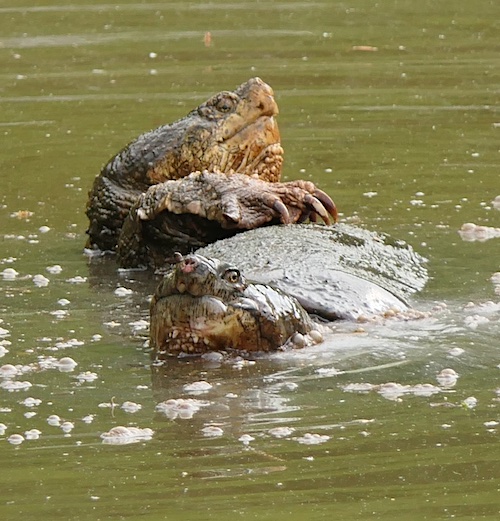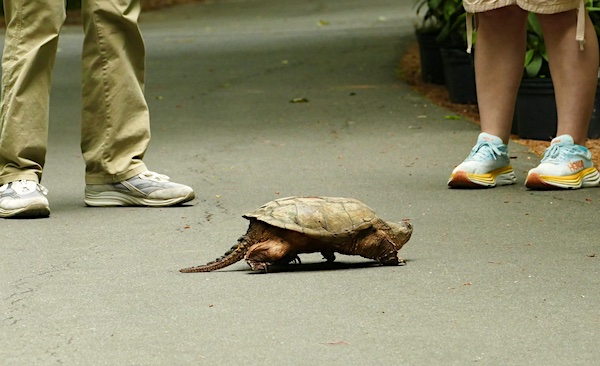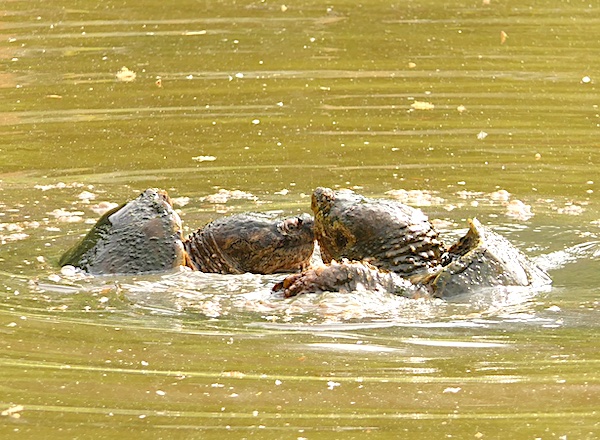Top Photo: Common snapping turtles during spring mating.
A disturbance just below the water’s surface caught my attention. Something was breaking the water’s surface about 100 feet or more out in the open water of the wetlands. Then it was gone.
Was it a duck? No, all our winter resident diving ducks had already departed for the north, or wherever else they feel a need to be at this time of year. Was it an otter? Otters can stay below the surface for a very long time and swim a great distance before resurfacing. But even so, they must come up sometime and somewhere. I didn’t see a pressure wave from an object moving under water. I waited. Nothing. Flat water.
There It was again in nearly the same location. This time I could see a large triangle shaped object poke up from the water, then another, then a large flat shell. It was a pair of snapping turtles trying to sort out the mating process.

Each spring I come across a pair of these ancient, prehistoric looking reptiles copulating in our wetlands, always a rough affair.

Later in the season the females will come ashore to find suitable nesting sites, sometimes quite far from water. They dig a hole in the red-clay earth, deposit 10 to 80 eggs (more often, around 25) which hatch in about 90 days.

As I watched the turtles tumble and roll around in the water, clicking the shutter on my camera as I did, a third head popped up.

This was going to be more exciting than I thought. However, one of the turtles soon broke off and left the other two to procreate. I hope they were successful. Newly hatched snapping turtles, despite their nasty reputation and rough appearance as adults, are quite cute.
